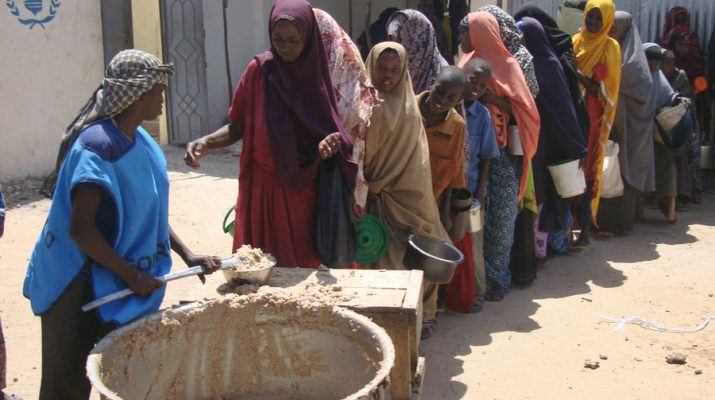The Humanitarian Coordinator for Somalia, Peter de Clercq, warned today that unless a massive and urgent scale up of humanitarian assistance takes place in the coming weeks, famine could soon be a reality in some of the worst drought-affected areas in Somalia. During the launch of the latest food security and nutrition data in Mogadishu, he called for urgent efforts to avert famine.
Somalia is in the grip of an intense drought, induced by two consecutive seasons of poor rainfall. In the worst affected areas, inadequate rainfall and lack of water has wiped out crops and killed livestock, while communities are being forced to sell their assets, and borrow food and money to survive.
“This is the time to act to prevent another famine in Somalia. Building on the response to drought in 2016, we need to rapidly step up the humanitarian response to effectively respond to the extensive needs and avert a famine,” said Peter de Clercq. “If we do not scale up the drought response immediately, it will cost lives, further destroy livelihoods, and could undermine the pursuit of key State-building and peacebuilding initiatives. A drought – even one this severe – does not automatically have to mean catastrophe if we can respond early enough with timely support from the international community.”
According to the FAO-managed Food Security and Nutrition Analysis Unit (FSNAU) and the Famine Early Warning Systems Network (FEWSNET), the number of people in need of assistance has increased from five million in September to over 6.2 million now, more than half of the country’s population. This includes a drastic increase in the number of people in “crisis” and “emergency” from 1.1 million six months ago to a projected 3 million between February and June this year. The situation for children is especially grave. Some 363,000 acutely malnourished children are in need of critical nutrition support, including life-saving treatment for more than 71,000 severely malnourished children.
The levels of suffering in the country, triggered by protracted conflict, seasonal shocks and disease outbreaks, are typically hard to bear, but the impact of this drought represents a threat of a different scale and magnitude. “The situation we are starting to see today in many rural areas today, particularly Bay, Puntland, is starting to look worryingly like the run-up to famine in 2010-2011. Most striking is the pace, scale and geography of deterioration, and the potential for the situation to become much much worse,” said Richard Trenchard, the Food and Agriculture Organization Representative for Somalia. “Labour prices are collapsing; local food prices are rising; food availability is becoming patchy; animal deaths are increasing; and malnutrition rates are rising, especially among children. Together, these are all signs that we are entering a phase that can lead to catastrophe.”
Most striking is the pace, scale and geography of deterioration, and the potential for the situation to become much much worse,” said Richard Trenchard, the Food and Agriculture Organization Representative for Somalia. “Labour prices are collapsing; local food prices are rising; food availability is becoming patchy; animal deaths are increasing; and malnutrition rates are rising, especially among children. Together, these are all signs that we are entering a phase that can lead to catastrophe.”
Somalia experienced the worst famine of the twenty-first century in 2011, affecting an estimated four million people, three-quarters of a million of whom faced famine conditions. The famine resulted in the loss of more than a quarter a million lives.

